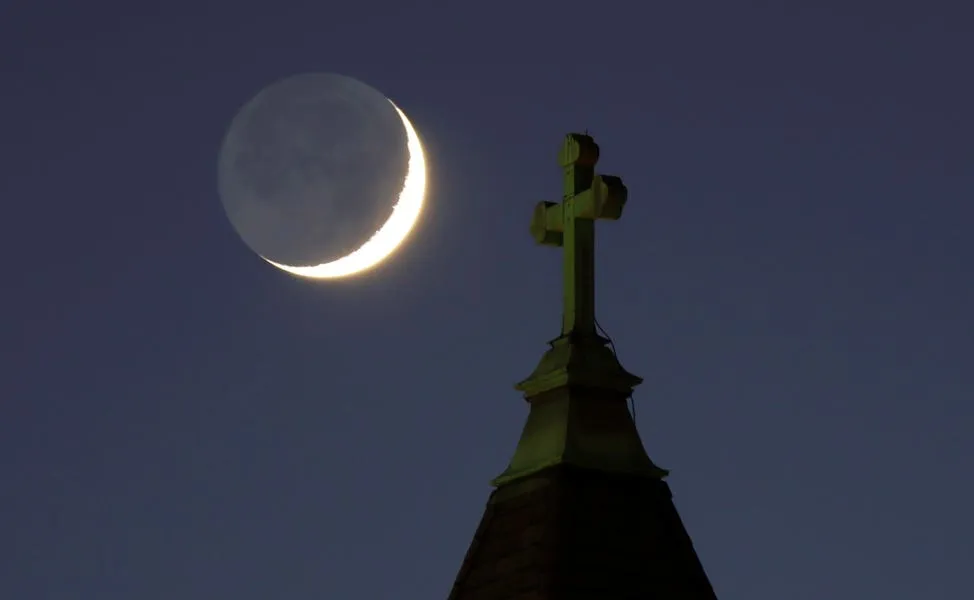Forbes contributors publish independent expert analyses and insights.
Skywatchers are in for a treat this week as the crescent moon takes center stage, beginning as a delicate sliver and growing brighter each night.
As well as being a beautiful sight in itself, it will pass close to Mars and bright stars Spica and Antares as it moves through the post-sunset sky from Tuesday, Sept. 23, through Saturday, Sept. 27.
Here's when and where to watch the moon just after sunset every night this week.
Fresh from its new moon phase -- which caused a deep partial solar eclipse at sunrise for observers in New Zealand and the eastern South Pacific region -- the moon will reappear after sunset tonight.
Just 4%-lit, the super-slim crescent will be a challenging find, hovering low in the west-southwest. Patient skywatchers with a clear horizon may be able to glimpse its faint glow -- but binoculars may also be required.
Tonight, after sunset, the crescent moon will shine brighter at 9%-lit and appear relatively close to Mars. Best viewed in the south-southwest after sunset, the pairing will sink quickly toward the horizon, so don't hang about. It's the final moon-Mars conjunction of the year.
Tonight, a 15%-lit waxing crescent moon will be about halfway between Mars and Antares, the brightest star in Scorpius. It's a good night to get a glimpse of "Earthshine," the faint glow of sunlight reflecting off Earth's oceans, clouds, and ice onto the moon's dark side.
The waxing crescent moon is tonight 23%-lit and approaching the constellation Scorpius, shining close to the star Acrab in the Scorpion's head.
This month's post-sunset crescent moon-viewing ends with a nice close conjunction of the now 31%-lit moon and Antares. Often called the "heart of the scorpion," Antares is a red supergiant star about 555 light-years away. Its reddish tint and bright glow make it one of the most recognizable stars in the night sky. Its name means "rival of Mars" because it's often mistaken for the planet when they appear close together, because both have a reddish color.
The crescent moon may bring a touch of class to post-sunset skies as we get to the end of September, but it's still worth rising an hour before sunrise to view the remains of the planet parade (Venus, Jupiter and Saturn are all easy to see with the naked eye).
Skywatchers in October could see something really special if Comet Lemmon (C/2025 A6), discovered in January, grows bright enough for naked-eye viewing. Its closest approach on Oct. 20-21 coincides with the peak of the Orionid meteor shower and the next new moon, creating ideal observing conditions.
